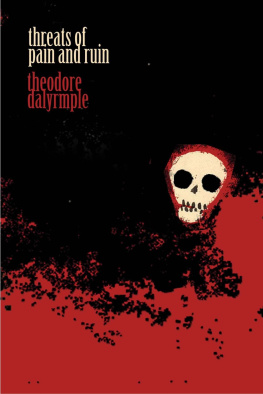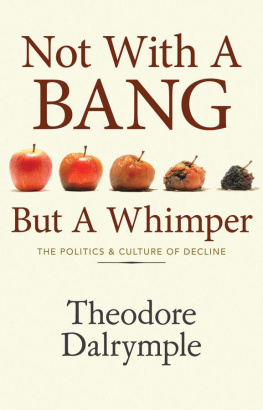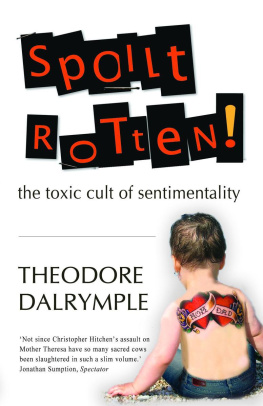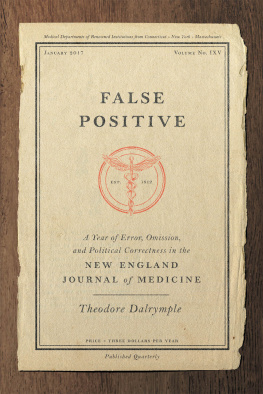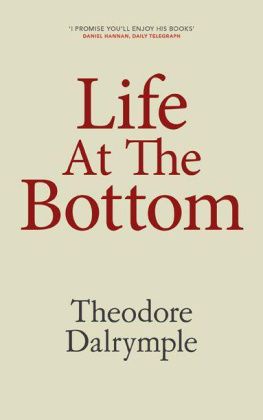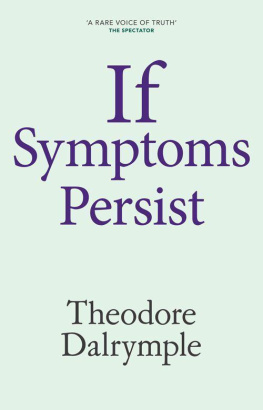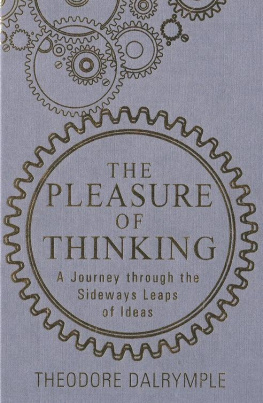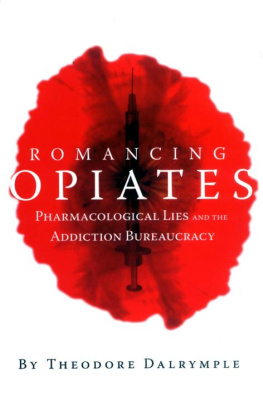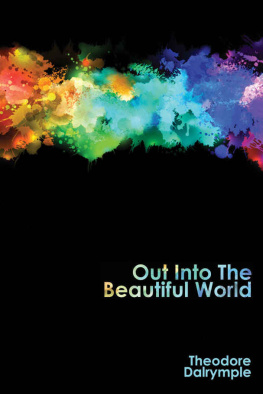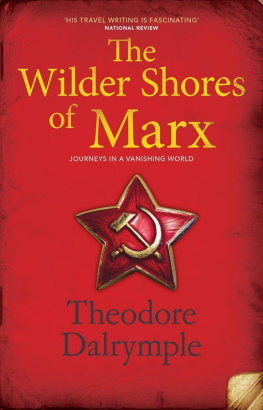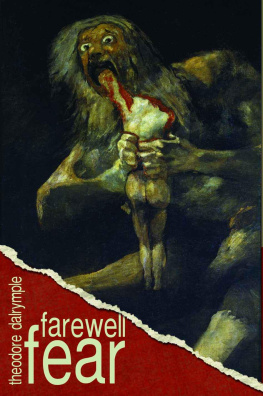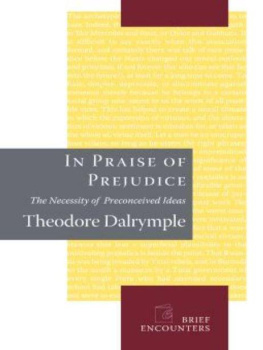Table of Contents
Threats of Pain
and Ruin
Theodore Dalrymple
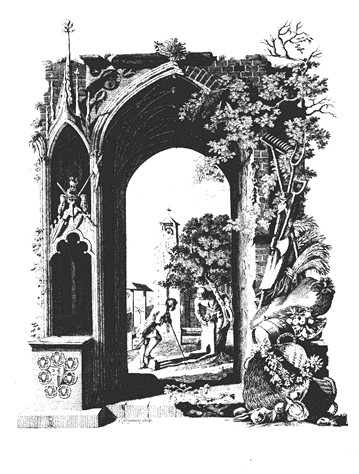
Designed by Richard Bentley (1753)
Copyright Anthony M. Daniels, 2014
All rights reserved. No part of this book may be reproduced in any form or by any means, electronic or mechanical, without permission in writing from the publisher except by reviewers who may quote brief passages in their reviews.
Published by New English Review Press
a subsidiary of World Encounter Institute
PO Box 158397
Nashville, Tennessee 37215
&
27 Old Gloucester Street
London, England, WC1N 3AX
Cover Art and Design by Kendra Mallock
ISBN: 978-0-9916521-2-9
E-Book Edition
NEW ENGLISH REVIEW PRESS
newenglishreview.org
The applause of listening senates to command,
The threats of pain and ruin to despise,
To scatter plenty oer a smiling land,
And read their history in a nations eyes,
Their lot forbade: nor circumscribed alone
Their growing virtues, but their crimes confined;
Forbade to wade through slaughter to a throne,
And shut the gates of mercy on mankind...
Thomas Gray
Introduction
W hat is written without pain, said Doctor Johnson, is rarely read with pleasure. Rarely perhaps, but not, I hope, never: for the little essays in this book were written, I must confess, without much angst. In part this was because, in writing them, I had no thesis to prove, no axe to grind, except that the world is both infinitely interesting and amusing, and provides us with an inexhaustible source of material for philosophical reflection.
Here by philosophy I do not mean either a pre-formed lens though which everything has to be examined, or a lens to be manufactured from the material examined and then used to look at everything else in the world. Few of us are what in philosophy are called system-builders, and in practice we are rarely worried that our attitude to the phenomena that come under our purview lead us to opinions that are not strictly congruent with one another. Sometimes we use utilitarian arguments, and sometimes we do not. But if no one were allowed to utter anything that was inconsistent with what he had uttered at other times in his life, we should all be silentor the most terrible bores. Monomania may be the beginning of many things, but not of wisdom, and certainly not of amusing things to say.
This, however, should not prevent us from taking disparate things in the world and reflecting upon them in a way that can only be called philosophical. Many of the subjects treated of in this book were found by serendipity or came to me in flashesit would be immodest to call them of inspirationof previously unsuspected connection and interest. I can only hope that they entertain the reader as they have entertained me. At least they will do no harm, in compliance with the first principle of medical ethics.
I am grateful to Rebecca Bynum, not only for her editorial help and skill, but for having allowed me to write about whatever I pleased in the New English Review , irrespective of its topicality or lack thereof. In a world in which the press of current business and current obsessions is a little like the peine forte et dure applied to journalists such as I, it is an enormous privilege to be able to write elliptically, to come at things from strange angles. For there is no other way to:
Tell all the truth but tell it slant,
Success in circuit lies,
Too bright for our infirm delight
The truths superb surprise;
As lightning to the children eased
With explanation kind,
The truth must dazzle gradually
Or every man be blind.
1 - Oh Calcutta!
A difficult lesson to learn and to accept, emotionally if not intellectually, is that there is rarely gain in society entirely without loss. That is surely one of the reasons why nostalgia is so common a response to the passage of time: it is not only lost youth that is regretted, but a lost world, at least in some or other of its aspects.
Nostalgia is generally derided as at best a useless, and at worst a harmful emotion or mood. It is useless when it leads to nothing except indulgence in itself; the nostalgic person is suspected of a kind of auto-intoxication. But nostalgia is harmful when it is made a guide to policy. The person who tries to recover the past in practice fails to understand one of the preconditions of the nostalgia which makes him want to do so, namely the irrecoverability of that very past.
On the other hand, nostalgia helps to counteract the Icarus view of life, which is that life is nothing but ascent nearer and nearer to the sun of perfection. The awareness that in some respect or other life was once better than it is now is a recognition, implicit at least, that a precondition of the possibility of improvement is the possibility of deterioration. There is no law written into the constitution of the universe that guarantees overall improvement, steady or sudden as the case may be; and that is why prudence is so great a political virtue.
Like any other virtue, prudence can be carried to excess, until it becomes the enemy of bravery, determination and daring; and even the most nostalgic among us do not wish for a return to the old days with regard, say, to medical treatment. What we really want is the pleasure of gain without the pain of loss. It is surely the role of prudence to minimise the latter while not discouraging the former.
There can hardly be a city in the world where improvement is more evident than Calcutta. When first I visited, forty years ago, it was still the city of dreadful night (Kiplings story of that name referred to Lahore, but with how much more justice might it have been Calcutta!). In those days, what Kipling wrote seemed just as true a description of contemporary Calcutta:
The mat-weavers hut under the lee of the Hindu temple was full of men who lay like sheeted corpses...
The difference between those who slept by the side of the roads and those who were dead seemed not so very great. It was said that fifty thousand people made their home each night in Howrah station. When your taxi stopped in traffic, beggars with leprosy would push their hideously disfigured limbs in at the open windows to solicit alms. One of the most unpleasant sensations one could ever experience, all the worse because one felt guilty for feeling it, was that of a beggar woman in the street, a baby in one arm, clawing or pawing lightly at ones side with her other arm as one walked along, her voice uttering a supplication whose tone one also felt bad for finding melodramatic and not wholly truthful. This irritation, perhaps, was born of an awareness that one could not wave the terrible poverty away with a wand, that the money spent on an idle visit (little enough as it was by my present standards) would have been better spent on relieving the poverty of at least a handful of people.
Needless to say, there was far more to Calcutta than its poverty. Among other things, it was by far the most literary city in India. There was as much energy as despair, and the Bengalis prided themselves on their artistic refinement and creativity, and relative indifference to the grosser aspects of economic existence.
Forty years, and several visits later, the city is transformed. The lepers are gone, the beggars are few. Perhaps a first-time visitor would be struck by the poverty, but not absolutely horrified by it. The middle class has expanded enormously. Many of the cars are new. At night there are bright lights advertising the consumer goods that are available everywhere else in the world but a few years ago were unheard of in India. There are riverside marinas under construction and you can tell that, unlike many now in the west, people think that tomorrow will be betterthat is to say, richerthan today. The age of the shopping mall has well and truly come to Calcutta for substantial numbers of people, who can at long last afford what they do not needa form of religious humbug or legerdemain that has always seemed to me rather unattractive.

